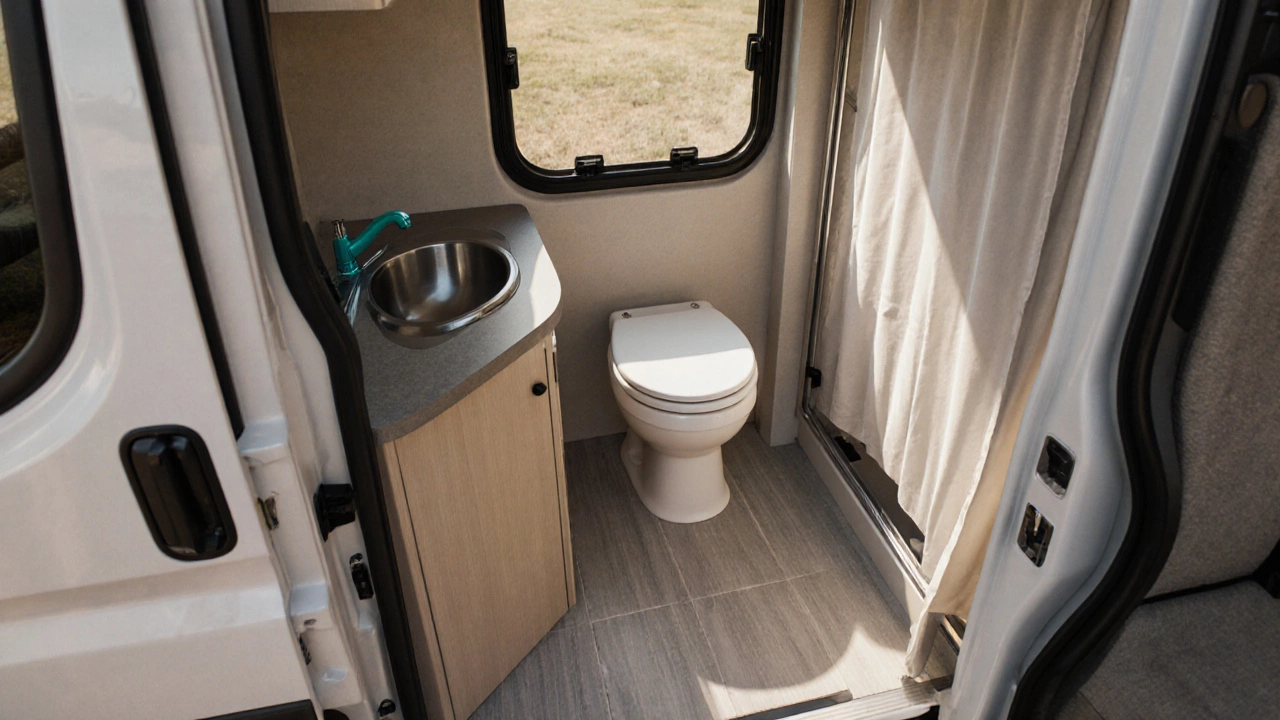Class B Motorhome Toilet
When you’re looking at Class B motorhome toilet, a compact, self‑contained bathroom system built into a Class B motorhome. Also known as camper van toilet, it combines a small waste tank, a flush mechanism, and often a built‑in water tank. The Class B motorhome, a van‑sized RV that blends car‑like driving with living space uses the same plumbing lines for the sink and shower, making the toilet a key part of the overall water system. Meanwhile, RV waste management, the process of handling black and grey water on the road determines how often you need to empty, clean, and refill the tank.
What makes a Class B motorhome toilet different?
First up is the waste tank. Most Class B units carry between 5 and 15 gallons of capacity, enough for a couple of days of travel but small enough to fit under the van’s floor. The tank holds "black water" – waste from the toilet – which is kept separate from "grey water" that comes from the sink and shower. Because the tank is sealed, it must be vented to release gases; this is where the toilet vent comes in. A properly sized vent prevents odors from seeping into the cabin and keeps pressure balanced when you flush.
Flush mechanisms vary. Some models use a manual pump that forces fresh water from a small onboard tank into the bowl, while others rely on an electric macerator that grinds waste and pushes it out with water from the main fresh‑water tank. Choosing between them depends on your typical water availability. If you often boondock, a low‑flow pump saves precious gallons, but an electric macerator can be more reliable on longer trips where you have access to mains water at campgrounds.
Speaking of water, the RV water system, the network of fresh, grey, and black water tanks and plumbing that supplies a motorhome plays a crucial role. A dedicated fresh‑water line to the toilet means you can control how much you use for each flush. Many owners install a separate small freshwater tank just for the toilet, allowing them to keep the main tank for drinking and cooking. This split‑system approach also simplifies emptying – you only have to dump the black‑water tank at an approved dump station.
Now, let’s talk about disposal. In the UK, you must use authorized dump points at motorhome parks or service stations. Dumping on public land can result in fines and environmental damage. When you’re in a boondocking spot, you’ll need a portable waste tank or a dump‑and‑go service that picks up your tank for a fee. That’s why boondocking, overnight stays without hookups, often in remote or wild locations is closely linked to toilet planning – you need to budget for extra water, a reliable vent, and a plan for emptying the black‑water tank.
Maintenance is the final piece of the puzzle. After each dump, run a cleaning solution through the toilet to prevent buildup. Many owners keep a small bottle of RV‑approved enzyme cleaner on board; it breaks down waste residues and keeps odors low. Regularly inspect the seal around the toilet bowl – a cracked seal can lead to leaks that damage the floor. If you use a macerator, check the blades for wear and clean any debris after each trip. Good RV maintenance, routine checks and repairs that keep your motorhome safe and functional habits extend the life of your toilet and avoid costly repairs.
All these factors – tank size, flush type, venting, water‑system integration, disposal rules, and upkeep – weave together to shape the perfect Class B motorhome toilet setup for your travel style. Below you’ll find articles that dig deeper into each of these topics, from budgeting for waste disposal to choosing the best flush system for limited‑water trips. Ready to get practical tips and real‑world advice? Keep scrolling – the next posts have the details you need to make your bathroom work wherever the road takes you.
-
 VIEW POST
VIEW POSTDo Class B Motorhomes Include a Toilet? What You Need to Know
Oct, 12 2025|0 CommentsFind out if Class B motorhomes include a toilet, explore cassette, portable and composting options, and learn how to choose, install, and maintain the right system for van life.